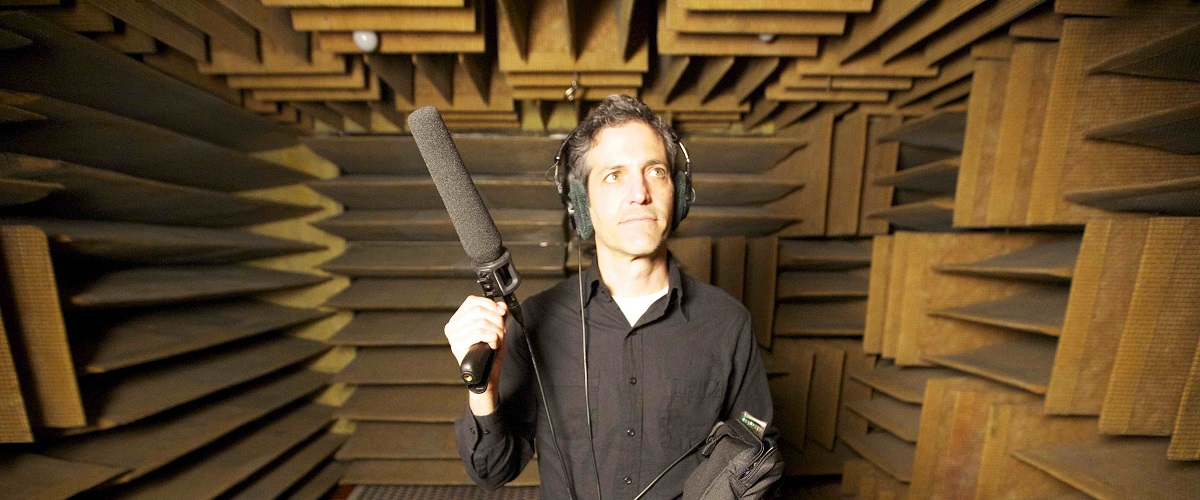Why only 32? (And as it happens, this imaginative documentary contains way more than that many sounds.) Well, because filmmaker Sam Green was inspired by the 1993 hybrid film “Thirty-Two Short Films About Glenn Gould,” directed by François Girard, which had in turn been inspired by Bach’s “Goldberg Variations,” a signature piece for pianist Gould which itself consists of 32 pieces of music when played in its entirety.
Green’s movie is all about audio—how we hear it, why it moves us, the different ways in which it can be heard. In the presentation I experienced, it was mostly through a pair of provided headphones. One of the notions the movie delves into is that while multi-channel sound dispersed throughout a theater via Dolby Atmos or other delivery systems is pretty ginchy in certain circumstances, it doesn’t really correspond to the way humans experience sound spatially. Because we, after all, only have two ears. There’s a mode of binaural recording that puts microphones in the ears of a sculpture of a human head and thus captures a certain real-world directionality. And heard through the headphones in a sound demonstration using only a box of wooden matches, held by a sound and rocket science expert, the effect is pretty nifty.
Except for a brief section when the filmmaker asks the viewers to remove the phones—the headphone version is definitely one that veers into an audience participation mode—that’s how we hear the movie. I’m surprised that Lou Reed is never mentioned in the work—in the 1970s, he was a real proselytizer for this binaural recording method. Using the method, he made one of his most consequential albums, Street Hassle. Among other things, this movie made me determined to give that platter a headphone listening again—the effect doesn’t play on room speakers.
On the other hand, maybe I shouldn’t be surprised that rock’s ostensible Prince of Darkness isn’t conjured here, as the approach of the movie is one mostly of unsullied awe, tinged with notes of sadness. It begins with pink light and a slight heartbeat, the sound of the womb, here recorded by Aggie Murch, a midwife who happens to be the spouse of movie audio visionary Walter Murch. From there, it shifts into narrative mode, discussing the early 19th-century theories of Charles Babbage, who speculated that no sound ever dies and that all we needed was a special decoding machine to snatch sounds out of the past. Then we get to the invention of the phonograph by Edison and the wild enthusiasm and speculation it engendered. Some thought, says Green, that “the machine would actually stop death.”
Green has an apt partner in the sound explorer JD Samson, who looked after the soundtrack and is a not infrequent onscreen presence. We also hear from avant-garde composers and sound artists, some still living and vital, like the great Annea Lockwood, and some no longer with us, like Pauline Oliveros, John Cage, and Lockwood’s partner Ruth Anderson. Their passings add poignance to the varied topics under consideration here, as does Green’s recollections of family members he has lost and can resurrect as “ghosts” via audio tape. Will the resurrection help him let go of these ghosts?
The material here isn’t always heavy. Around the middle of the movie, Green and Samson transform the theater space into a disco of sorts, with bass-heavy mixes of classics by Donna Summer and Cerrone. Green’s approach as the narrator is sometimes a little too “gee whillikers” to suit the tastes of this grumpy old man, but “32 Sounds” hit my sound and vision sweet spot just fine most of the time.
Now playing in theaters.




















